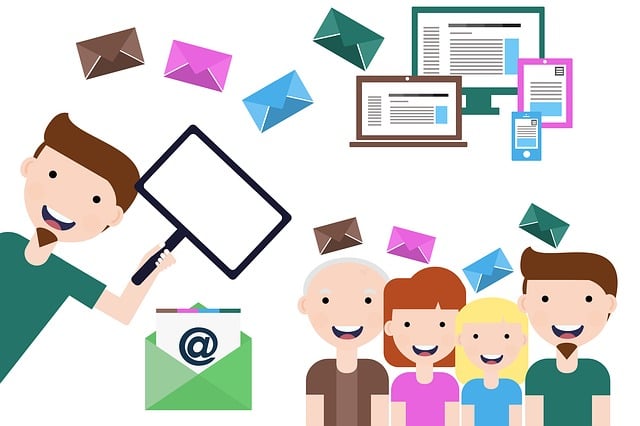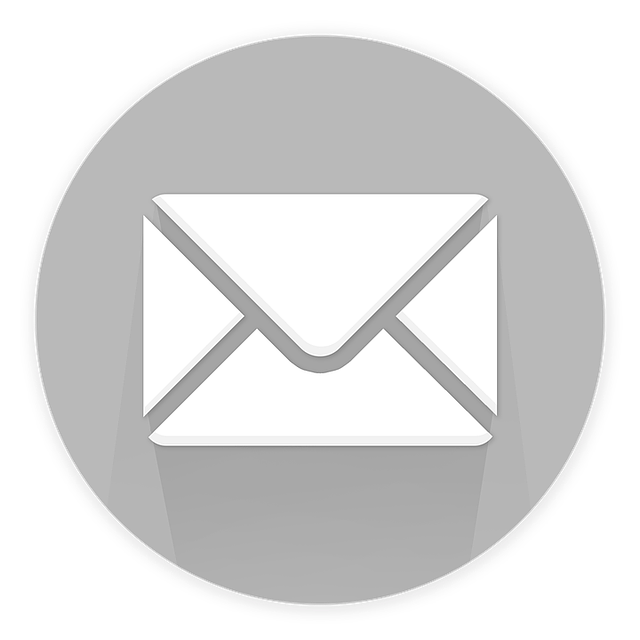Are you tired of sending mass emails that seem to go unnoticed by your audience? In the crowded world of e-commerce, it’s crucial to stand out and connect with your customers on a personal level. That’s where email marketing segmentation comes in.
By dividing your email list into smaller segments based on demographics, preferences, and behavior, you can target the right audience with tailored messages and offers that resonate with their unique needs. It’s like finding the needle in a haystack, but with the right tools and strategies, you can hit the bullseye every time.
With email marketing segmentation, you can automate the process, saving you time and effort. Plus, by monitoring and analyzing the results, you can continuously refine your approach for maximum impact.
In this article, we’ll guide you through the importance of email marketing segmentation and share best practices to help you successfully target the right audience for your e-commerce business. Get ready to see your engagement and conversions soar!
Key Takeaways
- Email marketing segmentation allows e-commerce businesses to connect with their audience on a personal level and deliver targeted messages and offers.
- Personalized emails make customers feel valued and understood, leading to stronger relationships and brand loyalty.
- Tailoring content and offers to specific customer groups increases the relevance and effectiveness of email campaigns.
- Automation and data analysis are essential for efficient segmentation, optimization, and continuous improvement in email marketing efforts.
Importance of Email Marketing Segmentation for E-commerce Businesses
You need to understand the importance of email marketing segmentation for your e-commerce business if you want to effectively target the right audience and maximize your conversions.
By segmenting your email list, you can send personalized emails that resonate with your customers, increasing the likelihood of engagement and conversion. One of the key benefits of personalized emails is that they make your customers feel valued and understood, leading to stronger relationships and brand loyalty.
Additionally, segmentation enables you to tailor your content and offers to specific groups of customers, increasing the relevance and effectiveness of your email campaigns.
To implement effective segmentation strategies, you can divide your email list into smaller segments based on factors such as demographics, purchase history, and engagement levels. This allows you to send targeted messages that speak directly to the interests and needs of each segment.
How to Divide Your Email List into Smaller Segments
Imagine you’re a master chef, carefully dividing your ingredients into smaller portions to create the perfect dish. Just like in cooking, segmenting your email list is crucial for a successful email marketing campaign.
By using segmentation techniques, you can target specific groups of customers based on their preferences, behaviors, and demographics. This allows you to tailor your messages and offers to each segment’s unique needs, increasing the likelihood of engagement and conversion.
There are various targeting strategies you can employ, such as dividing your list based on purchase history, geographic location, or even engagement levels. By understanding your audience and using segmentation effectively, you can deliver personalized content that resonates with each segment, ultimately driving more sales and building stronger customer relationships.
Transitioning into tailoring messages and offers to each segment’s unique needs, you can further enhance the impact of your email marketing efforts.
Tailoring Messages and Offers to Each Segment’s Unique Needs
Crafting personalized content for each segment’s unique needs helps you create a tailored experience that connects with your customers on a deeper level. By implementing personalization strategies and analyzing customer behavior, you can ensure that your messages and offers resonate with each segment.
Here are three sub-lists to help you understand the importance of tailoring your content:
-
Improved engagement: When you deliver relevant content to your audience, they’re more likely to engage with your emails, leading to higher open and click-through rates.
-
Increased conversions: By understanding the specific needs and preferences of each segment, you can customize your offers, increasing the chances of converting subscribers into customers.
-
Enhanced customer loyalty: When customers feel that you understand their individual needs, they’re more likely to develop a sense of loyalty towards your brand, leading to repeat purchases and positive word-of-mouth.
Crafting personalized content is just the beginning. To streamline the process, the next section will explore automating the segmentation process.
Automating the Segmentation Process
Streamline your customer segmentation process by automating it, allowing your marketing strategy to flow seamlessly and effortlessly like a well-oiled machine.
Automating segmentation has numerous benefits for your e-commerce business. Firstly, it saves time and resources by eliminating the need for manual sorting and categorization of customers. With automation, you can easily segment your email list based on factors like demographics, purchase history, and engagement level. This enables you to send targeted messages and offers to each segment, increasing the likelihood of conversion.
Moreover, automation ensures that your segments are always up-to-date, as customers are automatically placed into the relevant segment based on their behavior. By automating segmentation, you can optimize your email marketing efforts and achieve better results.
Moving forward, monitoring and analyzing the results will allow you to fine-tune your strategy even further.
Monitoring and Analyzing the Results
By monitoring and analyzing the results, you can uncover valuable insights that will help you optimize your strategy and achieve even greater success.
Tracking performance is essential to understand how your segmented email campaigns are performing. Look at metrics like open rates, click-through rates, and conversion rates to gauge the effectiveness of your emails.
Identify which segments are responding positively and which ones need improvement. This data will allow you to make data-driven decisions and refine your targeting efforts.
Additionally, analyzing the results will help you identify trends and patterns that can inform future segmentation strategies. Use these insights to optimize your campaigns, ensuring that you are delivering the right message to the right audience at the right time.
With a data-driven approach, you can continuously improve your email marketing efforts and drive better results.
Now let’s explore some best practices for successful email marketing segmentation.
Best Practices for Successful Email Marketing Segmentation
To successfully segment your email campaigns, make sure you understand your audience’s preferences and behaviors, so you can deliver personalized and relevant content that resonates with them. Personalization strategies and customer behavior analysis are key for successful email marketing segmentation. Here are some best practices to help you achieve this:
-
Collect and analyze customer data: Gather information about your audience’s demographics, purchase history, and browsing behavior. This data will help you create targeted segments.
-
Use dynamic content: Tailor your email content based on each segment’s preferences. Include personalized product recommendations, relevant offers, and customized messaging.
-
Test and optimize: Continuously test different segmentation strategies to see what works best for your audience. Analyze the results and refine your approach accordingly.
By implementing these best practices, you can create highly targeted email campaigns that engage and convert your audience. Remember, the key is to deliver content that speaks directly to your customers’ needs and interests.
Frequently Asked Questions
What are the potential risks of not implementing email marketing segmentation for e-commerce businesses?
Not implementing email marketing segmentation for your e-commerce business can have serious consequences. By failing to target the right audience, you risk wasting resources on ineffective campaigns and alienating potential customers.
Without segmentation, your emails may be seen as irrelevant or spammy, leading to a higher unsubscribe rate and lower engagement. Don’t underestimate the power of personalized marketing – segmenting your email list is essential for maximizing your success and minimizing the risks.
How can businesses effectively gather the necessary data to divide their email list into smaller segments?
To effectively gather the necessary data for segmenting your email list, businesses should employ various data collection methods. These methods include using sign-up forms, surveys, and tracking customer behavior on your website. By collecting this data, you can divide your email list into smaller segments based on demographics, preferences, and purchase history.
The benefits of personalized emails are immense. They lead to higher open and click-through rates, increased customer engagement, and ultimately, improved conversion rates. Don’t miss out on these opportunities to connect with your audience on a deeper level.
Are there any specific tools or software that can assist businesses in automating the email segmentation process?
Yes, there are several tools and software available that can greatly assist businesses in automating the email segmentation process. These tools can help you gather and analyze customer data, create targeted segments based on demographics, preferences, and behaviors, and automate the sending of personalized emails to each segment.
By using such tools, businesses can save time, improve targeting, increase engagement, and ultimately achieve better results from their email marketing campaigns.
What are some common challenges that businesses may face when tailoring messages and offers to each segment’s unique needs?
When tailoring messages and offers to each segment’s unique needs, businesses face challenges such as time-consuming manual processes, lack of customer data, and difficulty in personalizing at scale.
However, the benefits outweigh the challenges. By understanding customer preferences, businesses can deliver relevant content, increase engagement, and drive conversion rates. Automation tools streamline the process, allowing businesses to efficiently segment their audience and deliver personalized messages, resulting in higher customer satisfaction and increased revenue.
How can businesses measure the success of their email marketing segmentation efforts and make necessary improvements?
To measure the effectiveness of your email marketing segmentation efforts and improve your strategies, you need to analyze key metrics.
Look at open rates, click-through rates, and conversion rates to gauge the impact of your segmented campaigns.
Pay attention to the engagement levels of each segment and identify areas for improvement.
Use A/B testing to experiment with different approaches and track the results.
Continuously evaluate and refine your segmentation tactics to achieve better results and maximize your ROI.
Conclusion
Congratulations on completing the article!
Now that you understand the importance of email marketing segmentation for e-commerce businesses, it’s time to take action.
By dividing your email list into smaller segments and tailoring messages to each segment’s unique needs, you can significantly increase your chances of success.
Automating the segmentation process and monitoring the results will help you stay efficient and effective.
Remember, marketers who use segmented campaigns note as much as a 760% increase in revenue.
So start segmenting and watch your e-commerce business thrive!








